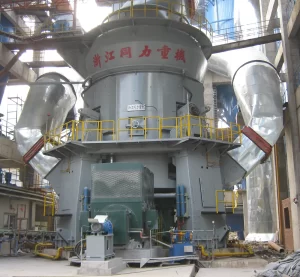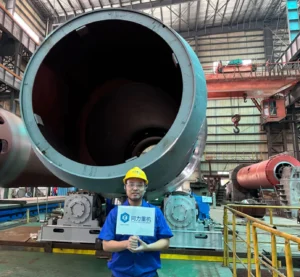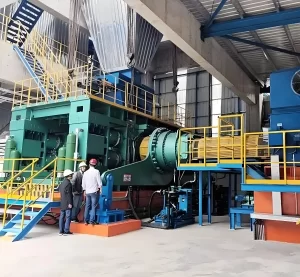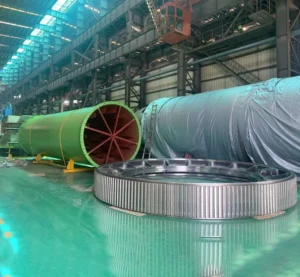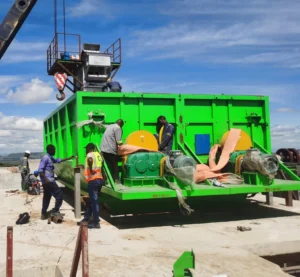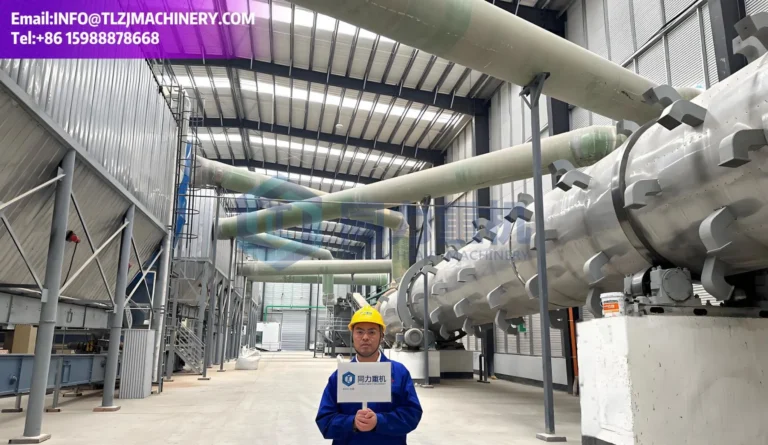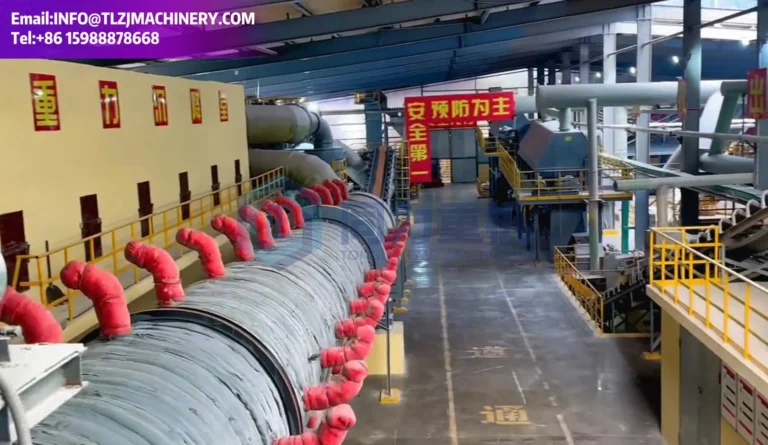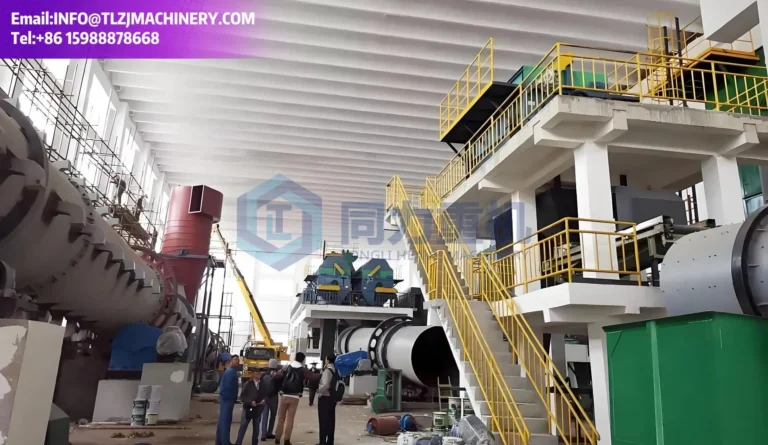Tongli's N (Nitrogen) P (Phosphorus) K (Potassium) fertilizer production lines offer capacities ranging from 50,000 tons/ year to 300,000 tons/ year.
The NPK compound fertilizer production line is an efficient production line developed by Tongli that integrates raw material crushing, automatic quantitative batching, mixing, steam granulation, drying, cooling, screening, coating, packaging, palletizing and other processes. It can accurately control the proportion of nitrogen (N), phosphorus (P), and potassium (K) according to different formulas such as 15-15-15 and 18-18-18, and produce compound fertilizers that meet the needs of different crops. Granulation equipment such as steam drum granulators or roller extrusion granulators ensure the uniformity and strength of the particles, while the drying system uses a highly efficient rotary dryer. The production line is also equipped with a coating machine to prevent fertilizer agglomeration and improve the storage stability and strength of the fertilizer. In particular, the customized formula and process can meet the nutritional needs of different soils and crops, and are suitable for large-scale production.
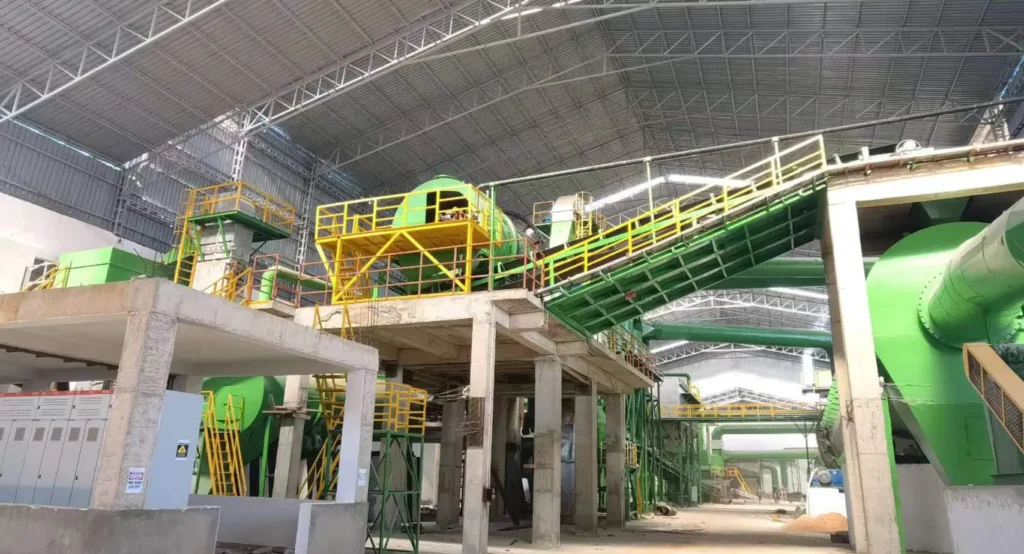
PRODUCTION LINE EQUIPMENT LIST
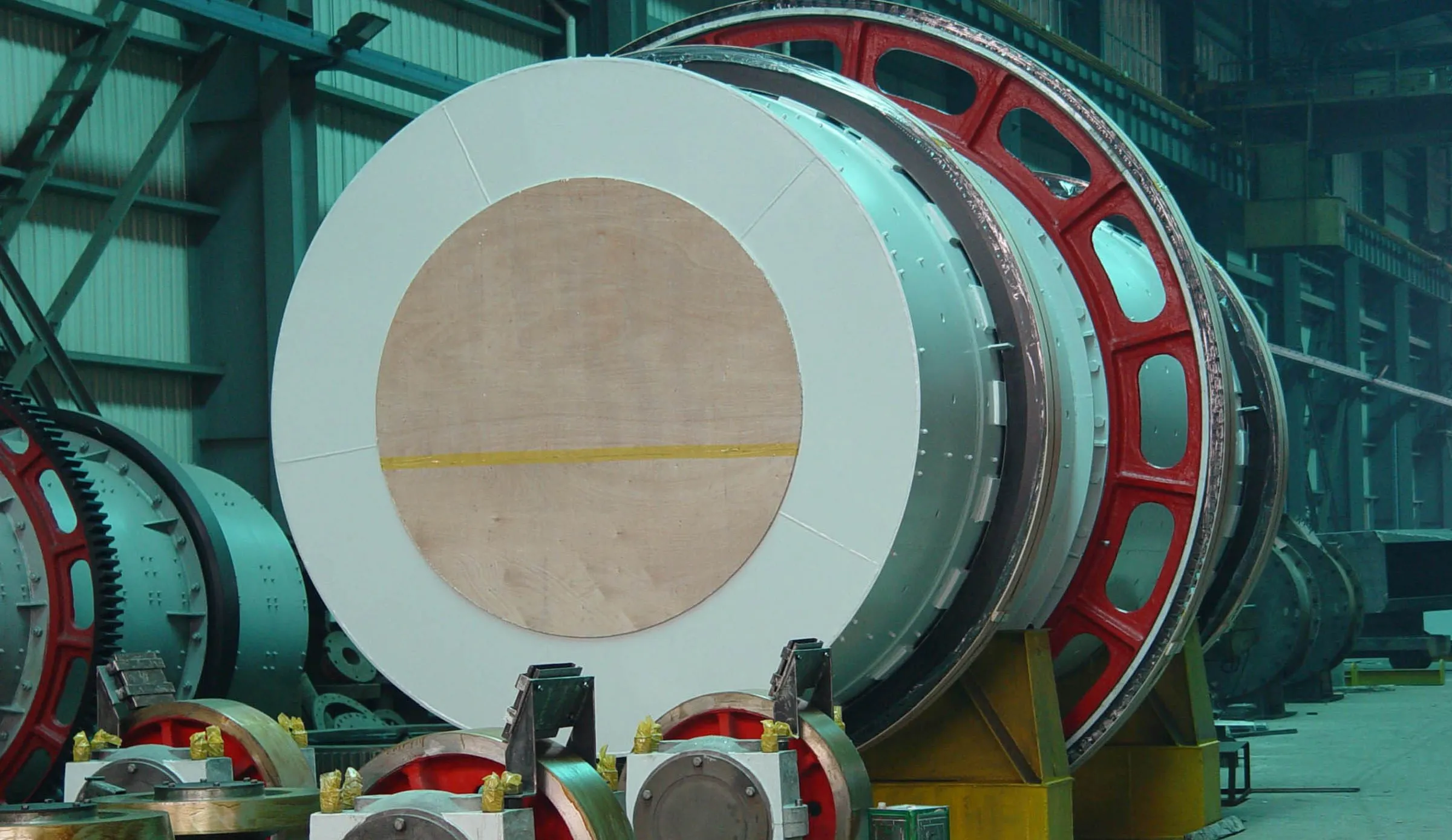
Compound fertilizer granulator: Compound fertilizer drum granulator is used to press powdered fertilizer into granules through wet process. Its design principle is to use high temperature steam and fertilizer to fully mix, and produce uniform and durable fertilizer granules under the rotation of the drum.
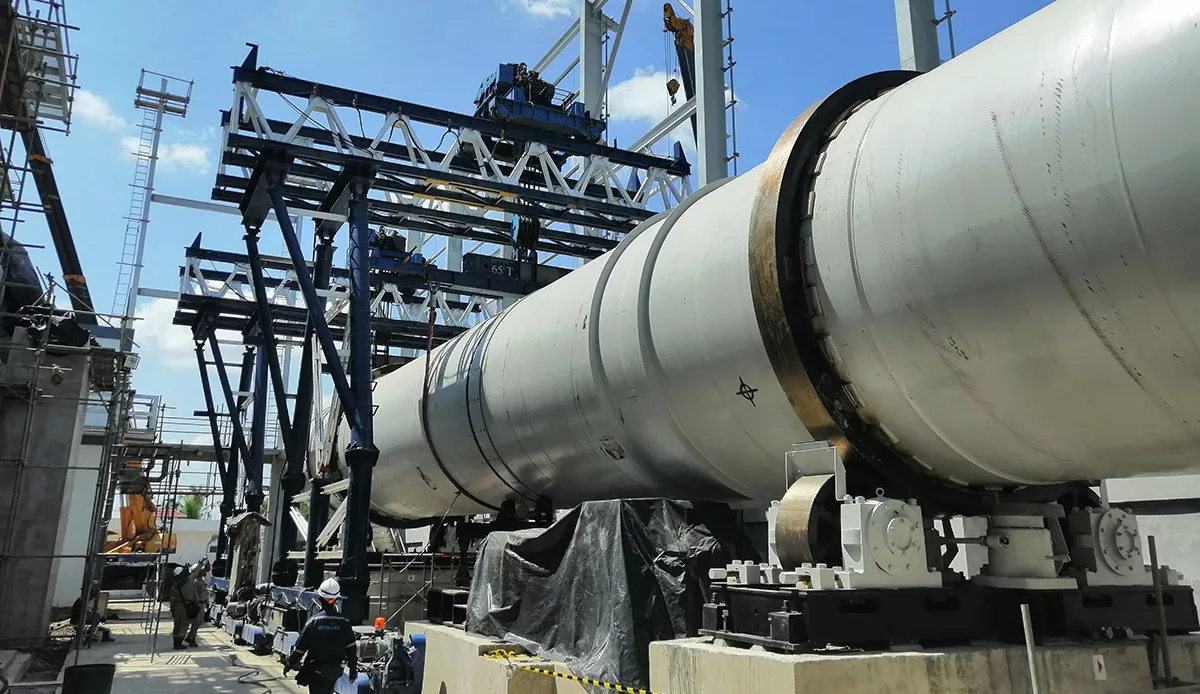
Dryers are used to remove moisture from fertilizer granules to improve product storage and quality. Common dryers include rotary dryers and fluidized bed dryers. Dryers circulate hot air to quickly evaporate moisture, ensuring that granules dry evenly and prevent clumping.
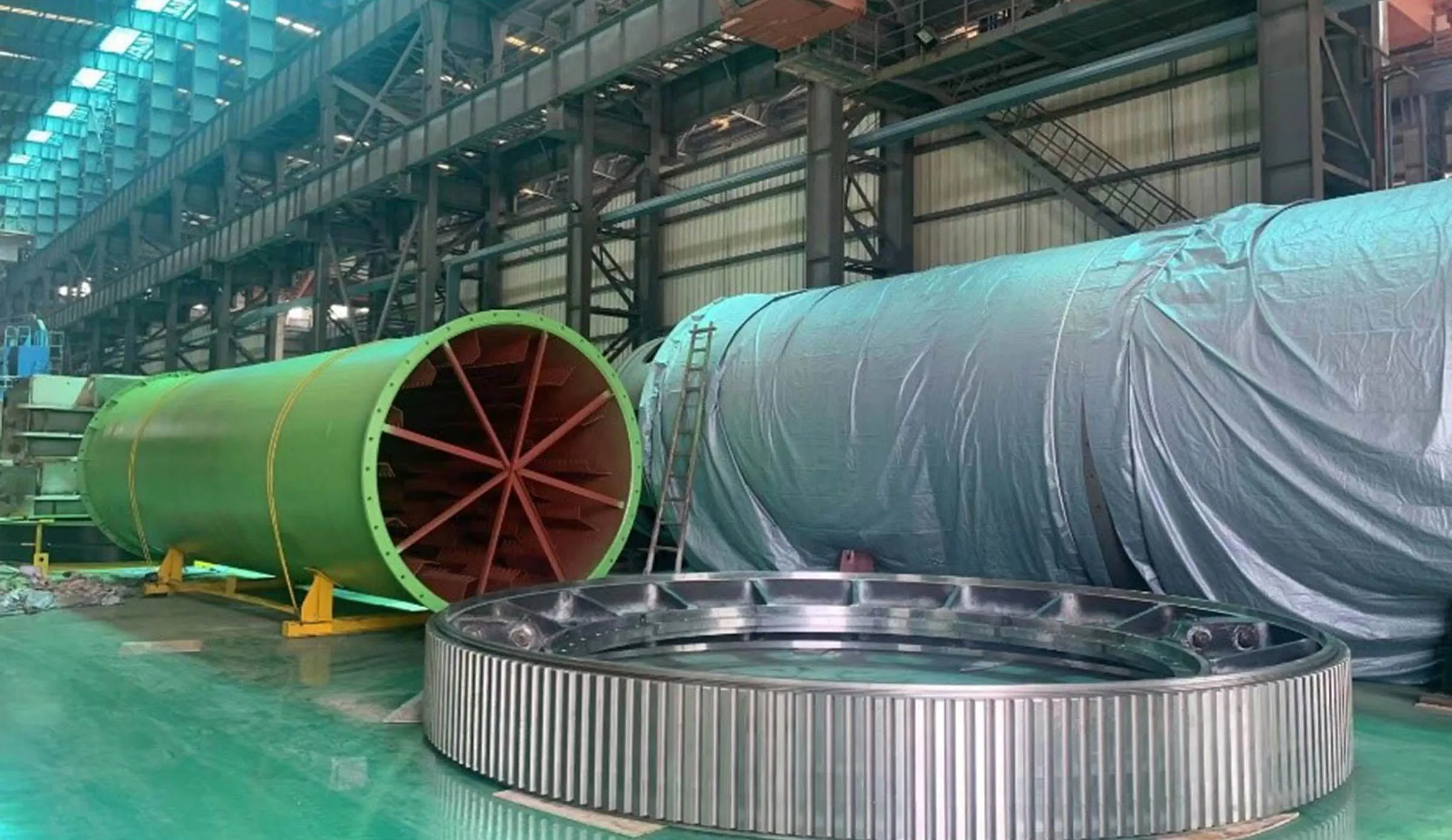
Coolers are used to reduce the temperature of hot fertilizer pellets coming out of the dryer. Common coolers include drum coolers and disc coolers. Their function is to reduce the pellet temperature, avoid agglomeration caused by high temperature, and improve the storage stability of the fertilizer.
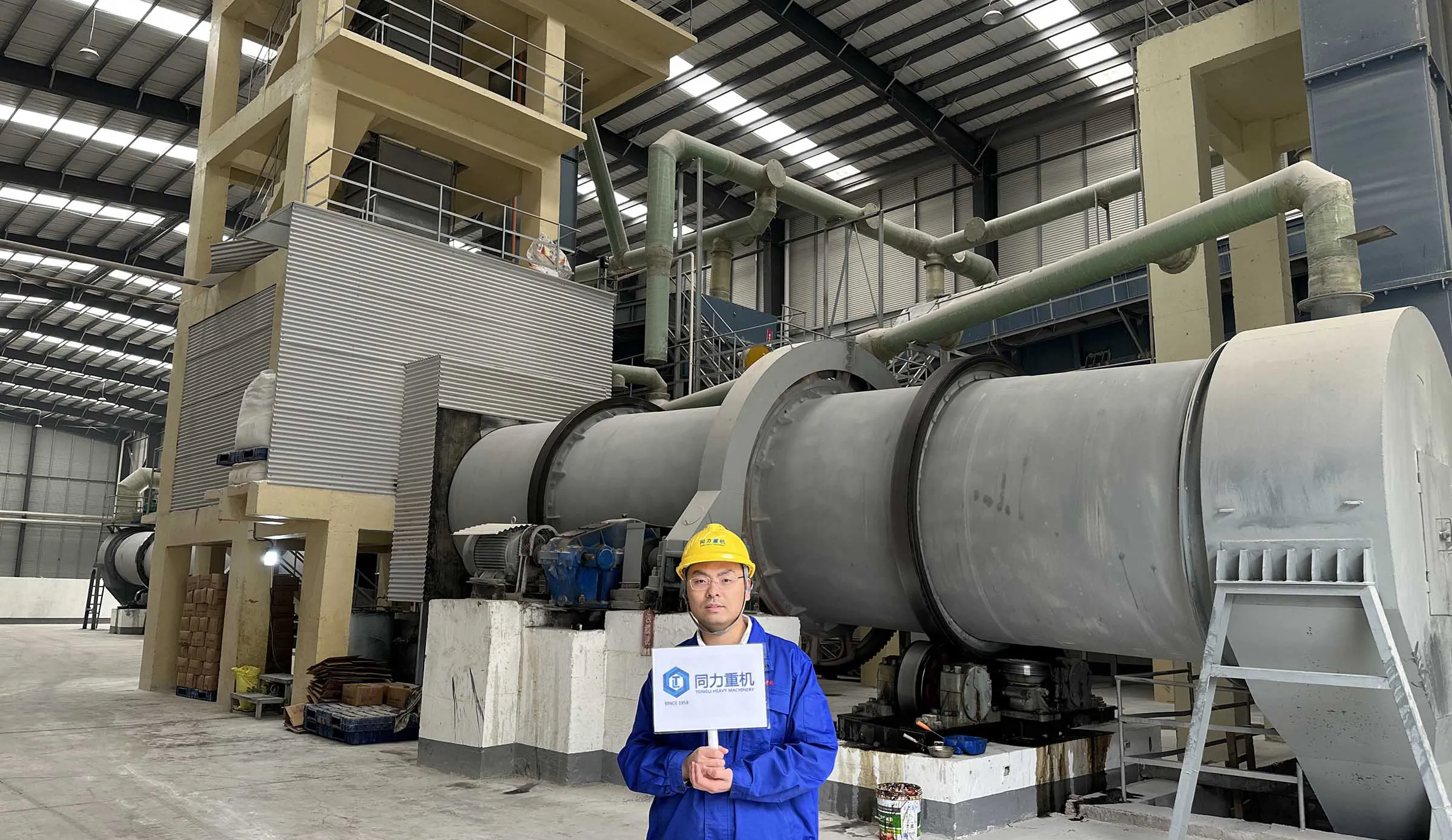
The coating machine is used to apply a protective film to the surface of fertilizer particles, such as moisture-proof, anti-caking or delayed fertilizer release. The coating machine evenly coats the material by rotating or spraying, and is often used in the production of slow-release fertilizers to enhance the functionality of the fertilizer.
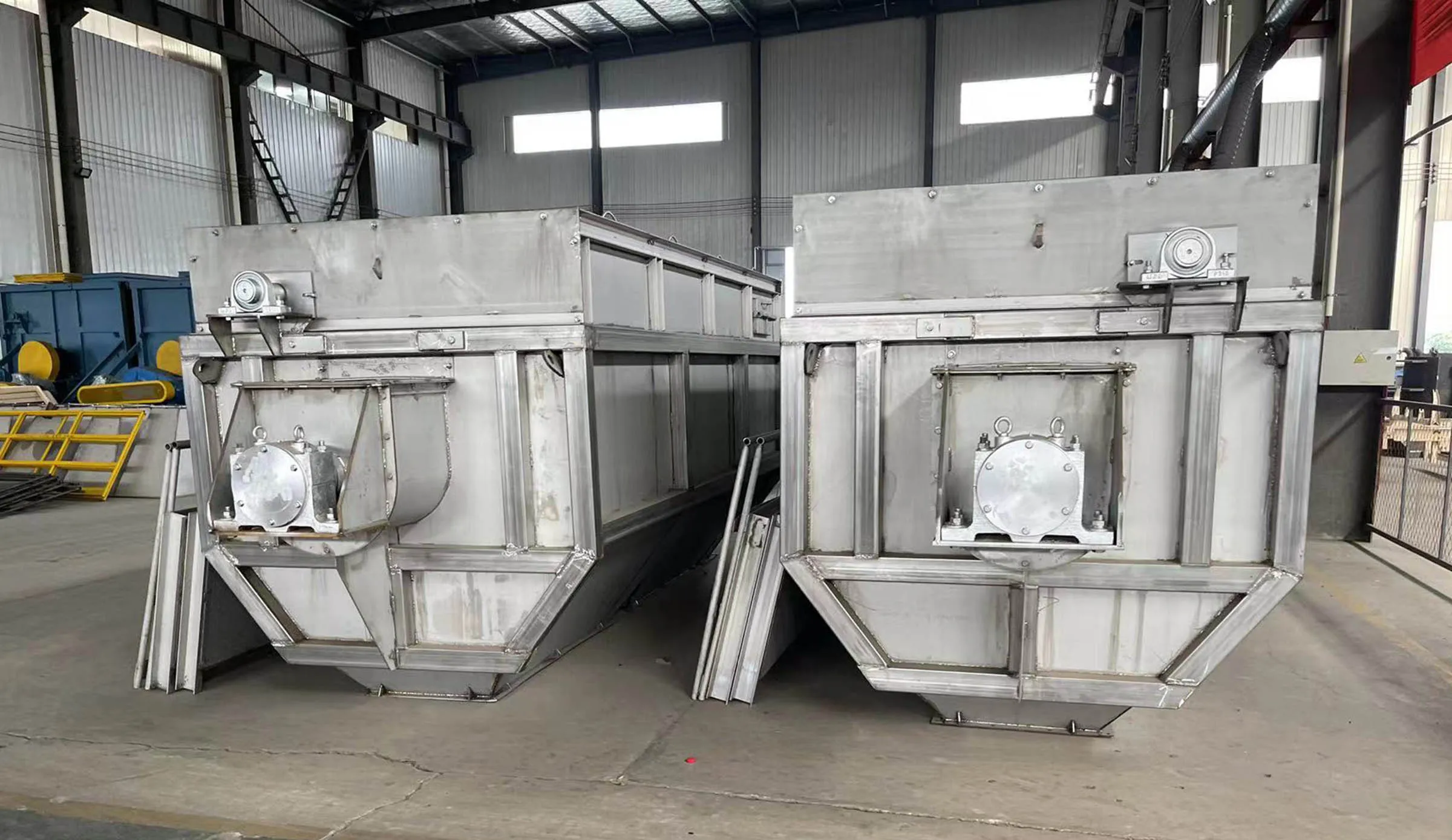
The drum screen is a screening device commonly used in fertilizer production lines. It is mainly used to screen fertilizer particles of different particle sizes. It separates the material into different particle sizes through the rotating drum. It is usually used to remove oversized or undersized particles to ensure product uniformity and quality.
NPK PRODUCTION LINE ADVANTAGES
The steam drum granulation production line can adapt to a variety of raw materials.
The granule formation rate of the steam drum granulation production line can reach 50~70%.
The steam drum granulation production line has a large output and can produce many formulas.
The coating machine is lined with SS304 stainless steel plate to extend the service life.
Steam heating is used, and the water content of the material after balling is low, saving energy.
The drum equipment is equipped with a manhole door and an observation window, and the material operation can be observed at any time.
The granulator is lined with rubber, and the material does not stick to the material when it falls under the action of gravity during the rolling process.
Tongli has rich experience in the manufacture, installation and commissioning of NPK compound fertilizer drum granulation production line equipment.
NPK PRODUCTION PROCESS
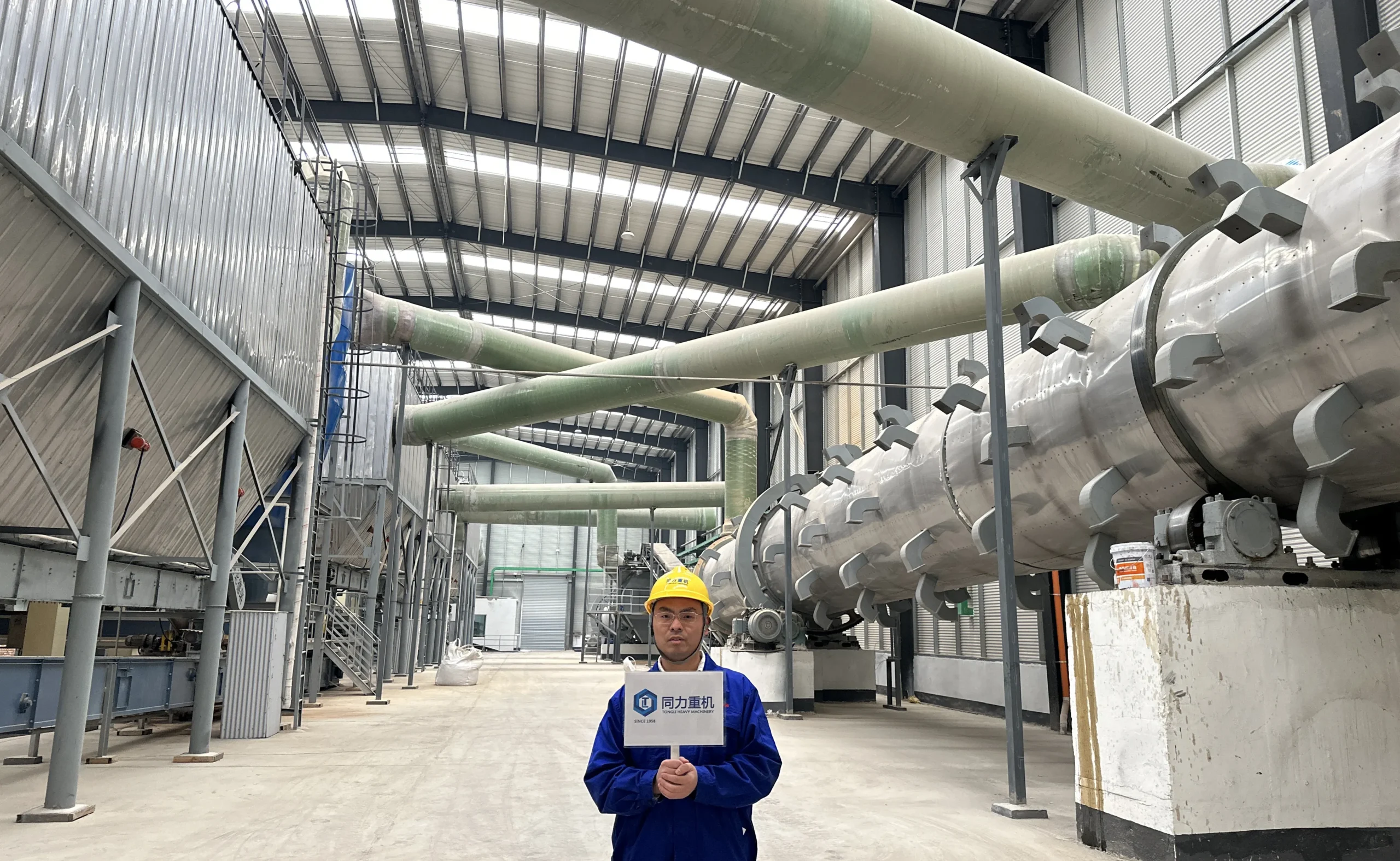
Raw Material Handling
The common raw materials for NPK compound fertilizer production line include nitrogen sources such as urea, ammonium sulfate, ammonium nitrate, ammonium chloride, phosphorus sources such as phosphate rock powder, monoammonium phosphate, diammonium phosphate, potassium sources such as potassium chloride, potassium sulfate, potassium nitrate. Raw material crushing is the first process in the compound fertilizer production line. According to the different conditions of the raw materials, Tongli will configure four different crushers such as urea crusher, DAP crusher, bulk crusher (for bulk materials), double cage crusher (for materials with high fineness requirements). For products with particles that are too large after screening, we equip chain crushers for secondary crushing. If the raw materials are purchased in the form of ton bags, we will equip ton bag crushers.
Auto-Batching
The automatic batching system batches the crushed raw materials according to a specific formula and ratio, and then enters the granulator for granulation. In the production process of NPK compound fertilizer, the accuracy and reliability of the automatic batching system are particularly important. An efficient batching system can ensure the uniform mixing of different ingredients, thereby ensuring the quality and consistency of the final product.
Granulation
The drum granulator granulates the powdered or small granular raw materials in the drum by rotating. Its working principle is that the raw materials gradually gather into granules in the drum as the drum rotates and by adding appropriate amounts of steam and binders. The advantages of drum granulation are its stable operation process, strong adaptability, ability to handle a variety of raw materials, and the granules produced are regular in shape, high in strength, and high in yield. Under normal circumstances, the particle size of the granulation can be controlled between 2-4 mm.
Drying
Drying is an indispensable process in the production of compound fertilizers. It is usually carried out after granulation. The moisture content of the wet fertilizer granules that have just been granulated is controlled within 2%~5% to prevent agglomeration and deterioration. The commonly used drying equipment is the rotary dryer, which works by evaporating the water in the wet material through the heated air flow. The wet fertilizer is fully in contact with the hot air in the drum through the rotation of the rotary drum to achieve uniform drying. Temperature control is very important, and low-temperature drying (120℃-150℃) is generally used to prevent the particles from breaking or chemically reacting due to excessive temperature. The dried NPK compound fertilizer particles not only increase the hardness and compressive strength, but also have low moisture content, which can effectively avoid the problem of agglomeration during storage and transportation.
Cooling
The main function of cooling is to improve the storage stability of the finished fertilizer and prevent agglomeration. The rotary cooler rotates the drum to make the high-temperature fertilizer particles fully contact with the air in the cooling drum, and relies on the airflow to dissipate heat to achieve rapid cooling of the particles. The temperature of the cooled fertilizer is usually controlled at room temperature or slightly above the room temperature range to ensure the stability and particle strength of the materials in the subsequent screening, coating and packaging links.
Screening
The purpose of screening is to ensure that the finished particles of NPK compound fertilizer are uniform and consistent to improve the quality of fertilizer. The sieved particles are divided into three categories: qualified particles, oversized particles and undersized particles. Vibrating screens or rotary screens are commonly used for screening equipment. The working principle is to separate the fertilizer particles that meet the requirements from the oversized or undersized particles through the screening action generated by the different apertures of the screen, vibration or rotation. Qualified particles directly enter the next process, oversized particles return to the chain crusher for re-crushing and granulation, and undersized particles are also returned to the granulator for reprocessing to avoid the fertilizer being affected by uneven particles during use.
Coating
After the material enters the coating machine, the DCS control system mixes the coating oil and anti-caking agent into the coating machine through the anti-caking agent conveying screw and the coating oil tank, and sprays a layer of material on the surface of the fertilizer particles. Since fertilizers are prone to absorb moisture and agglomerate in a high humidity environment, the coating can isolate the moisture in the air and keep the fertilizer loose. The coating can also slowly release the nutrients in the fertilizer and prolong the fertilizer effect.
Packaging
The finished NPK fertilizer enters the weighing hopper of the packaging scale through the feeding system. The built-in weighing sensor of the packaging scale can accurately measure the weight of the fertilizer. When the set target weight is reached, the system automatically stops feeding and prompts the operator to manually seal the bag or transfer to the subsequent automatic bag sealing process. LCS semi-automatic packaging scales usually have high accuracy, the error can be controlled within ±0.2%, and it is simple to operate and maintain. Compared with fully automatic packaging equipment, although semi-automatic packaging scales require manual intervention in bag sealing and handling, their cost is lower and they are suitable for small batch packaging needs that require flexible production.
Palletizing
The packaged 25kg or 50kg bagged fertilizers are sent to the palletizing area via a belt conveyor. ABB and Fanuc robots identify the position of the fertilizer bags through sensors, grab the fertilizer bags with grippers or vacuum suction cups, and place them on the pallet according to the predetermined stacking order and layers. Tongli palletizing robot systems can usually automatically adjust operations according to the size of the pallet and the stacking height. The advantage of compound fertilizer palletizing systems is that they can greatly improve the automation of the production line and reduce manual operations.
VIDEO
WHY CHOOSE US
The cement production line is efficient, reliable, and provides consistent quality. Customer service and support are excellent. We're highly satisfied and would recommend it.

CFO
The cement production line is efficient, reliable, and provides consistent quality. Customer service and support are excellent. We're highly satisfied and would recommend it.

CEO
The cement production line is efficient, reliable, and provides consistent quality. Customer service and support are excellent. We're highly satisfied and would recommend it.

CEO
The cement production line is efficient, reliable, and provides consistent quality. Customer service and support are excellent. We're highly satisfied and would recommend it.

CEO
FAQ
1) Raw materials: The first step in selecting an NPK production line is to determine the type and material characteristics of the raw materials. NPK production lines have a variety of granulation methods such as steam drum granulation, disc granulation, extrusion granulation, and high tower melting granulation. If the raw material has a high organic matter content, drum granulation and disc granulation are more suitable. If the raw material is a single component such as potassium chloride or potassium sulfate, extrusion granulation and high tower melting are more suitable.
2) Output: Tongli Heavy Machinery provides a variety of NPK compound fertilizer production lines with different outputs. For example, the calculation method of Tongli for a production line with an annual output of 200,000 tons is: 22.8t/h * 365d/y *24h/d = 200,000 tons per year. Different algorithms will lead to different annual outputs, so it is very important to confirm the output with the customer.
3) Confirmation of process routes: NPK production lines have a variety of process routes. Customers can send their requirements for the particle size and strength of the finished product to Tongli, and Tongli's engineers will check the process of the entire production line.
As China's earliest and currently the largest manufacturer focusing on NPK compound fertilizer drum production line, Tongli has started the research and development and production of fertilizer equipment since 1958. After 65 years of development, Tongli has grown from the earliest annual output of 10,000 tons and 20,000 tons to the current annual output of 300,000 tons or even 500,000 tons, and has accumulated rich experience and technology.
Secondly, Tongli cooperates with internationally renowned brands such as BASF, Krupp, Yaruan Group, etc. The choice of these major customers proves that Tongli's quality has been recognized by the world's top companies.
Third, Tongli has advanced processing equipment and technology, covering the entire process from steel casting, plate welding, assembly to packaging and painting, and can control product quality from the source, which makes Tongli stand out in the industry.
Finally, since 1998, Tongli has served more than 100 customers, covering many countries around the world, including Thailand, Indonesia, the United States, Canada, Africa, Jordan, etc., and has rich experience and extensive international cases in the compound fertilizer industry.
1) Efficient granulation technology: The drum granulation production line adopts advanced granulation technology, which is a technology optimized by Tongli after years of practice and customer feedback in compound fertilizer projects.
2) The internal design of the granulator optimizes the flow path of the material, prolongs the residence time of the material inside the drum, and achieves efficient and uniform granule formation by adjusting the speed, inclination angle and humidity of the drum. This process can effectively improve the ball formation rate, while controlling the particle size distribution of the particles, ensuring that the produced particles have consistent quality and performance.
3) The production line is equipped with a DCS automatic batching system, which realizes precise monitoring and adjustment of the fertilizer production process through PLC and DCS, and can adjust the production parameters of the batching part in real time, so as to achieve the production of compound fertilizers with different formulas at the fastest speed.
4) Energy-saving and environmental protection technology: The drum granulation production line incorporates an efficient heat recovery system and tail gas treatment device in its design. Unlike traditional compound fertilizer production lines, the emission of the Tongli compound fertilizer production line can reach 30mg/cm3, which fully meets the emission requirements of developed countries. At the same time, the operating environment of the workshop has also been significantly improved.
1) Improve the pelletizing rate of the granulator: Improving the particle size, humidity and adhesion of the raw materials can increase the output. By reasonably adjusting the raw material ratio and adding an appropriate amount of adhesive, the pelletizing rate of the material in the drum can be improved. In addition, pre-treating the raw materials to ensure that their humidity is moderate can help reduce agglomeration and wall sticking during the granulation process and improve granulation efficiency.
2) Adjust the speed of the granulator: Reasonable adjustment of the speed and inclination angle of the drum can optimize the movement path of the material, extend the residence time of the material in the drum, and make the material collide, roll and aggregate more fully to form uniform particles, but it is necessary to avoid excessive retention of raw materials and reduce efficiency.
3 In the granulation process, the temperature control of the material is crucial. Improving the heat recovery system of the production line, such as increasing the heat recovery efficiency of the hot air furnace, can better maintain the granulation temperature, reduce energy consumption and increase the overall output of the production line. Ensuring the matching of the drying system and the granulation system can maintain stable humidity and temperature during the granulation process.
First of all, the equipment uses wear-resistant rubber lining, which not only has excellent wear resistance, but also can reduce the adhesion of materials on the inner wall of the drum, reduce the cleaning frequency and realize automatic cleaning function. Tongli's drum granulator has a high balling ratio, which ensures that the material is fully formed in a short time, and the particles are uniform and strong.
Tongli has a patented granulator steam injection system, which saves more energy than traditional granulators.
In terms of materials, all castings of Tongli are cast by Tongli's own foundry, made by three-phase electric arc furnace cast steel and resin sand process, and equipped with German spectrometer to measure the composition of castings. After the heat treatment of the castings, ultrasonic flaw detection and magnetic particle flaw detection are required to ensure the quality of the castings.
In terms of processing technology, Tongli uses automatic welding technology to ensure the quality of the welds, and is equipped with high-precision processing machine tools to ensure the overall roundness and straightness.
1) Tongli dryer has many technical advantages, which effectively improves the drying efficiency of compound fertilizer. First, the dryer adopts an optimized lifting plate to ensure that the material is fully turned and evenly distributed during the drying process, maximizing the contact area between the material and the hot air, thereby improving the heat exchange efficiency.
2) Secondly, the hot air system of Tongli dryer has been carefully optimized, and can achieve uniform distribution of hot air by adjusting the hot air temperature, flow rate and wind direction, ensuring the consistent drying effect of the material throughout the drying process.
3) In addition, the equipment has excellent sealing performance, effectively preventing hot air leakage and humidity fluctuations, maintaining a stable drying environment, thereby improving the overall drying efficiency and energy saving effect.
These design and technical improvements enable Tongli dryer to provide stable and efficient drying effects during long-term operation, ensure the uniformity of compound fertilizer drying, and meet the needs of high-capacity production.
Tongli's NPK compound fertilizer production line is equipped with an advanced DCS control system, which has significant advantages in the measurement of raw materials and finished products.
First, in terms of accurate measurement of raw materials and control of fertilizer formula, the DCS system can monitor and adjust the input ratio of various raw materials in real time, ensure that the supply of each ingredient meets the formula requirements, avoid unstable product quality due to raw material deviation, and quickly switch from one formula to another.
Secondly, in terms of finished product measurement, the DCS system uses automatic control and sensors to achieve real-time monitoring of finished products. The factory manager can observe in real time how much raw materials enter the NPK production line and how many tons of finished products are output.
Coating is a key step in compound fertilizer production. Its function is to enter the coating machine for surface treatment after the finished product passes through the rotary screening machine and the cooler.
The coating system is relatively complex. In addition to the coating machine, it also includes an oil storage tank for coating oil and an automatic batching scale to control the amount of material entering the coating machine.
Since the amount of coating oil needs to be accurately matched with the proportion of the finished material, the DCS control system is used to adjust the batching speed and the amount of coating oil to ensure accurate supply.
At the same time, the anti-caking agent is quantitatively added to the coating machine through a screw conveyor to prevent the compound fertilizer particles from agglomerating or flying during the coating process. The supply of anti-caking agent is also precisely controlled by the DCS system to ensure that the coating oil and anti-caking agent are evenly distributed.
After coating, the strength of the compound fertilizer particles can usually reach about 20 Newtons, and the coating can also change the color and appearance of the finished product, making it have different color effects such as blue.
NPK COMPOUND FERTILIZER PRODUCTION LINE TECHNICAL PARAMETERS
| Item | Overall Dimensions L × W × H (mm) | Prod Capacity (t/h) | Power (kW) | Quantity (set) | Remark |
| Urea crusher | 1400*2900*1500 | 15 | 15 | 10 | Case material:Q235B Lining:304 stainless steel |
| Raw material belt conveyor | * | 50 | 15 | 2 | Belt speed: 1.6–4,0 m/s. Tape specifications: 12 MPa, 5 layers |
| Raw material hoist | 500*10m | 20 | 5 | 10 | Shaft: φ100mm, tail bearing: 1312 |
| Double axis chain crusher | 1500*2500*1500 | 15 | 25 | 6 | Case material:Q235B Lining:304 stainless steel |
| Double roller compactor | 1000*980*800 | 0.8-1.4 | 15 | 30 | Hot-dip galvanized channel steel |
| Automatic-batching system | B800x(1200+2000) | 0.5-5 | 1.5+1.5 | 10 | With DCS control system and control panel |
| Spray drum granulator | φ2.8*8m | 48 | 35 | 1 | Perform secondary anti-corrosion spraying treatment |
| Rotary drum dryer | φ3.5*30m | 50 | 75 | 1 | Evaporation capacity 3500-5000, with slef-cleaning device, Double hood cover, large gear material ZGA310-4570 |
| Rotary drum cooler | φ3.2*25m | 45 | 55 | 1 | Installation angle 2.5°, cylinder speed 6r/min, Double hood cover, large gear material ZGA310-4570 |
| Rotary drum coating machine | φ2.5*10m | 40 | 25 | 1 | Speed 6 rpm, lined with 8mm thick rubber sheet. Large gear material hardness HB180-210, the gear material is 40Cr |
| Measurement platform | * | * | * | 1 | Main frame is a 350*250*5 square tube |
| Anti caking powder spraying system | * | 40 | 5 | 1 | Including float level gauge and thermometer; High-pressure plunger pump |
| Coarse particle screener/sieve | φ2.2×8 | 20 | 7.5 | 2 | Main shaft of 325*16 thick arm tubes and a secondary shaft of 95*8 thick wall tubes. |
| Fine particle screening machine | φ2.0×7 | 18 | 5.5 | 2 | Main shaft of 300*16 thick arm tubes and a secondary shaft of 95*8 thick wall tubes. |
| Vibrating screener | 2x5m | 25 | 5.5 | 1 | 0 - 25 rpm mounting angle 0-10 degrees |
| Dust bag filter | * | 40500 m3/h | 5.5 | 3 | Including vibrator Bag: 133*3500, solenoid valve |
| Cyclone dust removal | * | 8000 m3/h | * | 2 | Resistance 1470–1770 |
| Drying/cooling fan | * | 1000-10000m3/h | 15-155 | 10 | Casing material SQ235B Impeller thickness 6 mm/8 mm |
| Double bucket packaging scale | Weighing range: 100-1000kg | 600-800bag/h | 10 | 2 | Depending on the material density above 0.55 |
| Belt conveyor | * | 5-55 | 5.5-15 | 15 | Tape width: 800, center distance 12 meters, belt speed: tape specifications: 12 MPa 5-layer 100-type nylon thread high-strength wear-resistant tape |
| Spray tower FRP scrubber | 1.5x6m | 4000-80000m3 | * | 2 | Acid mist HNO3 < 1000 mg/m3 |
| Chimney | 2x18m | 4000-80000m3 | * | 2 | Wind speed in barrel 12.7 meters/s |

